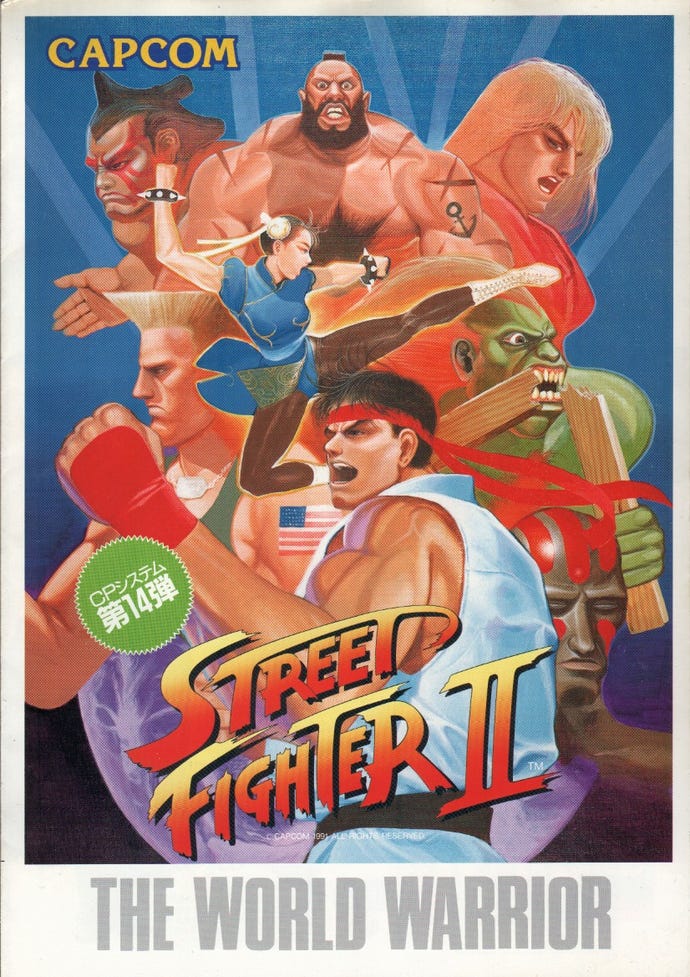USgamer Community Question: What's Your All-Time Favorite Arcade Game?
Which arcade game's coin slot did you shove the most quarters into?
This article first appeared on USgamer, a partner publication of VG247. Some content, such as this article, has been migrated to VG247 for posterity after USgamer's closure - but it has not been edited or further vetted by the VG247 team.
This week we're talking about arcade games. Not arcade games the genre - arcade games that you put money into. That's right - we're taking a trip to your local arcade, pizza joint, or wherever else you might have played your very favorite coin-ops.
We want to know which machine you just couldn't resist shoveling coins into. And if you're too young or live too far from an arcade to have ever been able to play such machines, then feel free to talk about your favorite arcade conversion!
As always, while you ponder your favorite coin-op, here's Team USG on their all-time top arcade machines:

Jeremy Parish, Editor-in-Chief
I've said plenty about Strider here on USG, so I suppose it should come as little surprise that I would pin it down as my favorite arcade game.
Or maybe it should. Strider isn't really a typical arcade experience, not in the classic sense. Compared to other games I've played ad nauseum, Strider takes a very self-contained approach to play; it was a reaction to the rise of finite console action and adventure games. In the early '80s, console games attempted to replicate the endless score-attacking/quarter-dropping vibe of arcades; as consoles rose in the NES while coin-ops cooled, though, arcade games began to replicate the start-to-finish sense of closure of something like Super Mario Bros. or The Legend of Zelda. It would eventually flip back around once these platformers became belt scrollers (Double Dragon, Final Fight) and those morphed into fighting games. But that hadn't quite happened yet in 1989, and thus, Strider.
Of the countless console-style arcade games to emerge in the decade following the debut of Super Mario and Ghosts 'N Goblins, none were so thoughtful, so much of an event as Strider. Where most arcade action games went for overwhelming odds and unfair, grindy mechanics (see: Rastan Saga, Magic Sword, Ninja Gaiden, and many more), Strider took a different tactic. Rather than stimulate coin drop bys assaulting players with impossible mobs of enemies, Capcom (and designer Kouichi Yotsui in particular) instead assaulted players with spectacle. The result is a game that holds up far better than the generic clumsy platform brawlers of its day. Every stage of Strider consisted of segments, and every segment was different than the last. Levels were peppered with minibosses and smaller, unique enemies, all sitting between crazy platforming challenges and wild, explosive events.
It was kind of like a QTE or Laser Disk game, except that it never broke from the immersion provided by total player control — a precursor to Half-Life in a lot of ways, but with the complete adventure compacted down to a fast-paced 20-minute thrill ride. Plus, all those unique foes possessed a huge variety of potential skills and tactics, so no two playthroughs would turn out exactly the same. The Chinese acrobats on the Balrog airship might go down without a fuss… or, then again, they might go into hyper-adrenaline mode and put up the toughest fight in the entire game.
Despite being a short, self-contained adventure with ostensibly slim replay value, Strider is a game I can return to again and again — especially in the arcade. Playing Strider on an upright versus at home is the difference between seeing a movie at the theatre and on television. Sometimes, you need a little spectacle in your life.
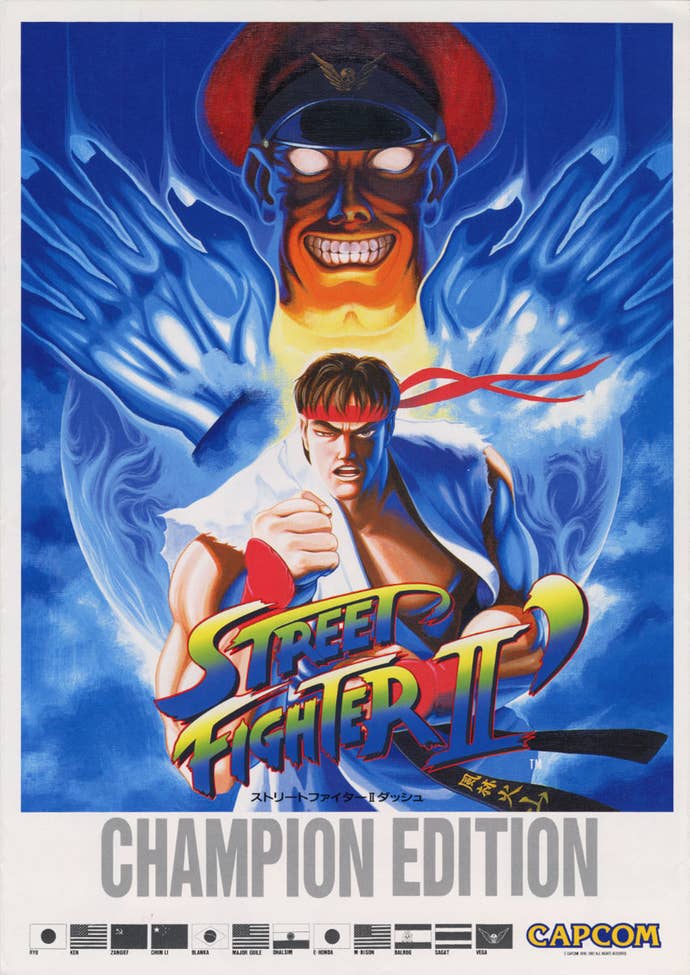
Jaz Rignall, Editor-at-Large
To be honest, my all-time favorite arcade machine is Robotron 2084 - Williams' classic twin-stick shooter that kicked off the genre in stunning style back in 1982. It lacks any pretensions, and simply presents the bare bones of a shooter: just you, the enemies and bonuses to pick up. No backdrops. No power-ups. No bosses. Yet while being very simple in concept, it's extremely challenging and highly addictive.
However, I've talked about it numerous times in the past, and rather than repeat myself, I thought I'd instead talk about the game that runs it a very close second as my all-time favorite coin-op, and that's Street Fighter II: Champion Edition.
I remember seeing the original Street Fighter II: The World Warrior at an arcade trade show in London, and it blew me away like few other games ever have. The twin rows of three buttons, and instructions that outlined seemingly quite complex joystick movements to execute powerful moves weren't exactly user-friendly at first glance, but once I started playing, those now-famous combos soon became second nature, and I was hooked. So hooked, in fact, that I ended up hogging the machine for so long, I was eventually asked to leave the Capcom booth so that others could play it.
However, it was the sequel that I ended up becoming completely obsessed with. At the time I was working at Computer and Video Games magazine in the UK, and one of the staff there somehow managed to persuade Capcom to give us a machine for our office. I still can't believe they were willing to do that even today, but lo and behold, a shiny new Champion Edition cabinet arrived at our offices and pretty much stopped work for the rest of the day. Indeed, we ended up having to restrict our time with the machine because we were playing it so much that our work was suffering, but at lunch time and "tea time" between 3:00-3:30pm, the staff played competitively for months on end. We had a strict "winner stays on" routine, and that worked out pretty well.
Even though Street Fighter has been refined over the years, I still have a huge soft spot for Championship Edition - it's the version I've poured a huge amount of time into, and it delivered by far the most enjoyable and exciting PvP gaming I've ever had with an arcade machine. It's a truly brilliant, classic game.
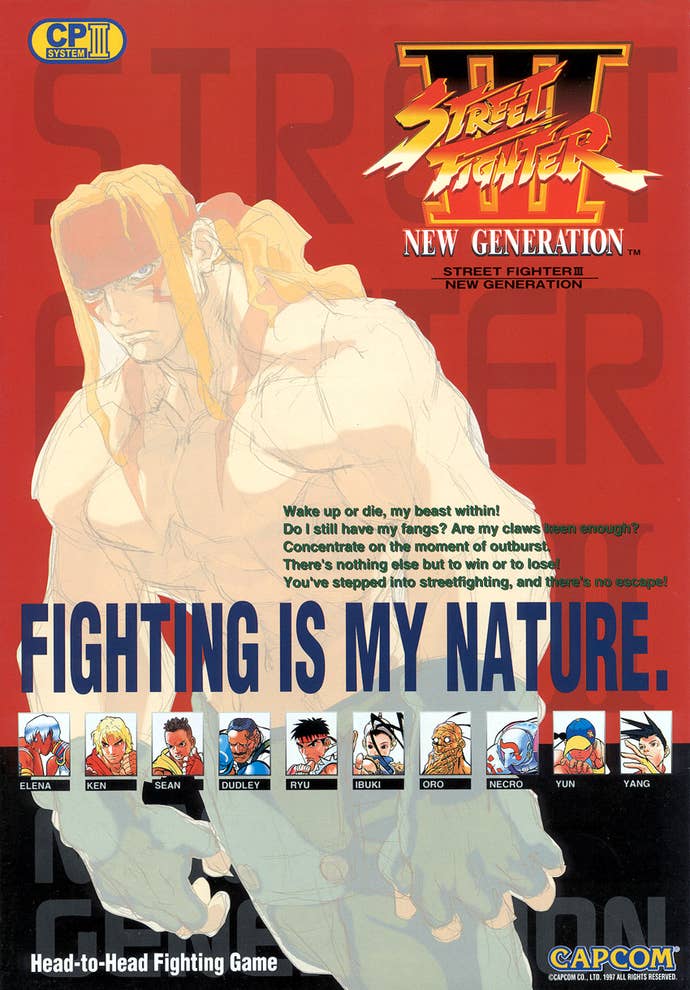
Mike Williams, Associate Editor
I played a number of arcade games in my day. I would throw quarters into Street Fighter II, Mortal Kombat, Killer Instinct, Alien vs. Predator, Dungeon and Dragons, Fatal Fury, Samurai Showdown, Strider, X-Men vs Street Fighter, Virtua Fighter, and more. I clearly remember the feeling of rationing my 8-12 quarters, deciding what I was going to get the most bang for my buck on.
One game launched in arcades at a time when I could truly appreciate what I was playing. Old enough to understand how awesome the game was, but not old enough that most arcade games were available home consoles. That game was Street Fighter III.
Do you remember how big a moment it was for arcade when we realized that Capcom could finally count to three? It was such a big moment that I remember walking into my local arcade, seeing the big "Three" on the cabinet. The community had been waiting for long that just calling it Three was enough, everyone knew exactly which game it was.
I was 17. I had a part-time job selling video games. That meant I had time to practice, resources to practice with (we got free rentals), and money to frivolously throw away on arcades. I was good enough to run my quarters out for a bit, as opposed to a young mike who threw quarters into the machine like they were going out of style.
Street Fighter III was amazing. It was worth the wait, that same core that made Street Fighter II and Street Fighter Alpha great, but with updated, fluid animation. The evolutions of classic characters were pull off well and new characters like Alex and Sean were a highlight. And Parrying. Whew. I remember practicing Parrying. I could reliably parry a fireball, but anything beyond that was a crapshoot. I'm sure it was for many people, which is why that EVO 2004 moment is so legendary.
For me, SFIII is a combination of the right game at the right time. It might not be the best arcade game ever, but it's the one that resonates with who I am the most.
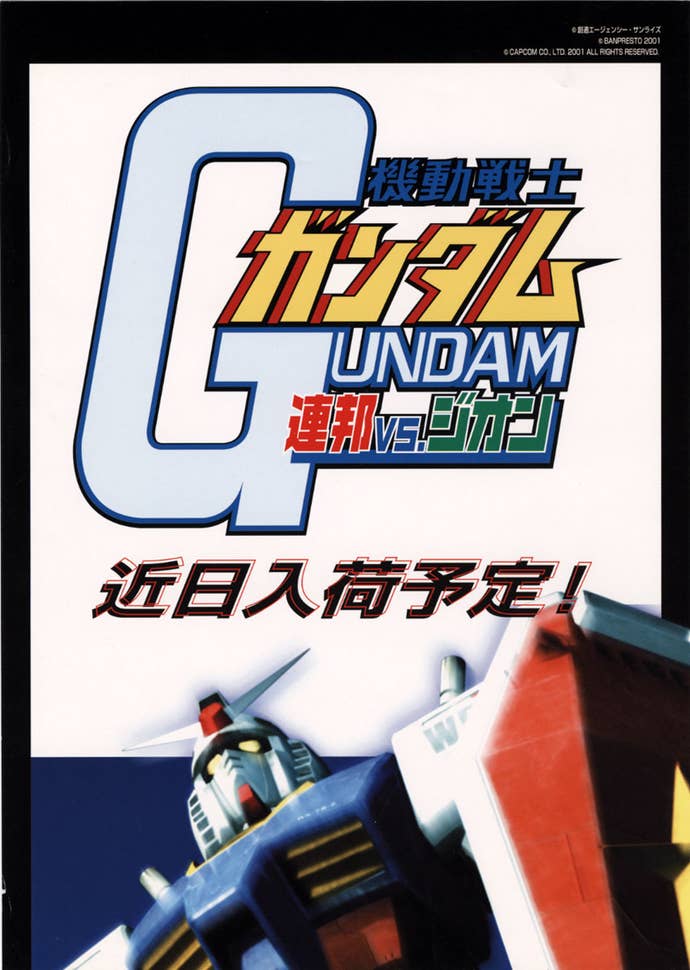
Kat Bailey, Senior Editor
This question makes me kind of sad because I came in right at the tail end of the arcade boom. I got to see the final surge of Street Fighter II in the '90s, and I played my share of beat 'em ups, but by the time I was old enough to have a little money and ready access to an arcade, they were decidedly on the wane. I feel like I missed an era.
Having said that, I did live in Japan for three years; and while game centers aren't what they used to be either, I do have a few favorites. Topping the charts is undoubtedly Gundam Extreme Vs., the "next-gen" iteration of the decade-old series released in 2010. I had played my share of Gundam vs. Gundam games up until that point, but to see the series in high-definition for the first time was a revelation, and I couldn't get enough of it.
For those of you reading this who have no idea what I'm talking about, Gundam Versus is a 2v2 multiplayer fighting game that received limited exposure in the U.S., but has otherwise been mostly limited to Japanese arcades since its inception. It's the platonic ideal of the arcade experience, encouraging friends to pair up and face off against strangers in a communal environment. And it's a dream game for a Gundam fan like myself, featuring mobile suits from across a huge number of shows and spinoffs.
While it's basically unknown in the U.S., it has had a strong foothold in the Asian competitive scene for a few years now, its twitchy, high-speed combat and strategic balancing being very conducive to high-level play, not to mention streaming. It has also been ported to the PlayStation 3, earning the series a small but fanatical following in the U.S.
Truth be told, I stink at Gundam Extreme Versus, much as I stunk at Street Fighter II back in the day. The combos are so intricate, the strategy so dense, that a high-level player can crush me in relatively short order. I keep going back, though, facing off against gaggles of Japanese high schoolers, who are probably wondering what the hell this weird woman from another country is doing in their arcade. That alone makes it my favorite.
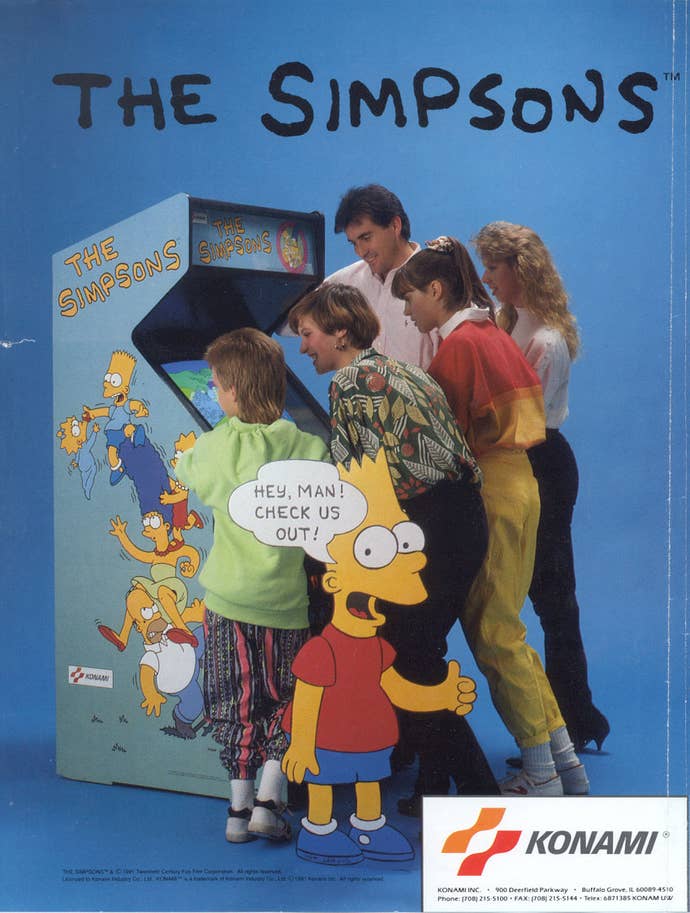
Bob Mackey, Senior Writer
As a person of a certain age, it's only fair that I absolutely love The Simpsons. Like many people between 30-40, I work many of the show's references into my everyday speech and writing, a trait that makes me totally unique and not insufferable at all. Yet, despite my intense obsession with The Simpsons as a youth--one that would undoubtedly turn me into a miscreant as President (H.W.) Bush warned--I had no tolerance for the awful, awful line of licensed games this animated sitcom spawned. After Bart vs. The Space Mutants, I soundly learned my lesson, and only ended up playing the remaining Simpsons games much later in life, when I did a write-up for each and every one of them for 1UP.com. This sad feat now makes me Wikipedia's predominant expert on Bart Simpson's Escape from Camp Deadly.
So, Simpsons games were bad, and, in those early years, it'd be about a decade before someone tried making one of them good. So it probably shouldn't take much brainpower to figure out why Konami's The Simpsons still lingers in the heart of many arcade-goers. The developer took what worked--namely, the same framework as their Teenage Mutant Ninja Turtles brawler--and made this cabinet a celebration of everything Simpsons. Where most Simpsons games would drop in a few obvious Springfield references before backing away from the source material entirely, Konami's interpretation is absolutely packed with everything viewers saw in the show's first two seasons. Sure, the context it's provided in doesn't make a whole lot of sense, but the deep cuts present in this game tell me more than a few people behind the arcade game must have been pretty big fans of the show.
These types of brawlers don't always age well, but, close to 25 years later, it's still easy to boot up The Simpsons, cruise through it in an hour, and have a pretty good time. (That all-Mr. Burns boss fight level at the end is pure quarter-stealing bullshit, though.) Visually: it's still an amazing-looking game, as characters are just off-model enough to be extra-expressive, and the developers at Konami gave their cast of yellow humanoids plenty of unique animations to capture the visual inventiveness of the series itself. When Marge gets electrocuted, for instance, you can see the silhouette of rabbit ears within her beehive: an idea of Matt Groening's that was tossed out for being a bit too weird for those grounded early seasons. And if this sounds completely made-up--which it should--this weird little slice of trivia has been thoroughly documented.
To me, The Simpsons is the best brawler ever made: There's rarely a dull moment, and it's fun to keep playing just to see what weird and/or hilarious thing the developers want to show you next--which kinda reminds me of Metal Slug in that respect. As I grow older and The Simpsons continues to not die, I find it almost impossible to resist dropping a quarter if i see that arcade cabinet out in the wild--which is something that happens more often than you'd think.
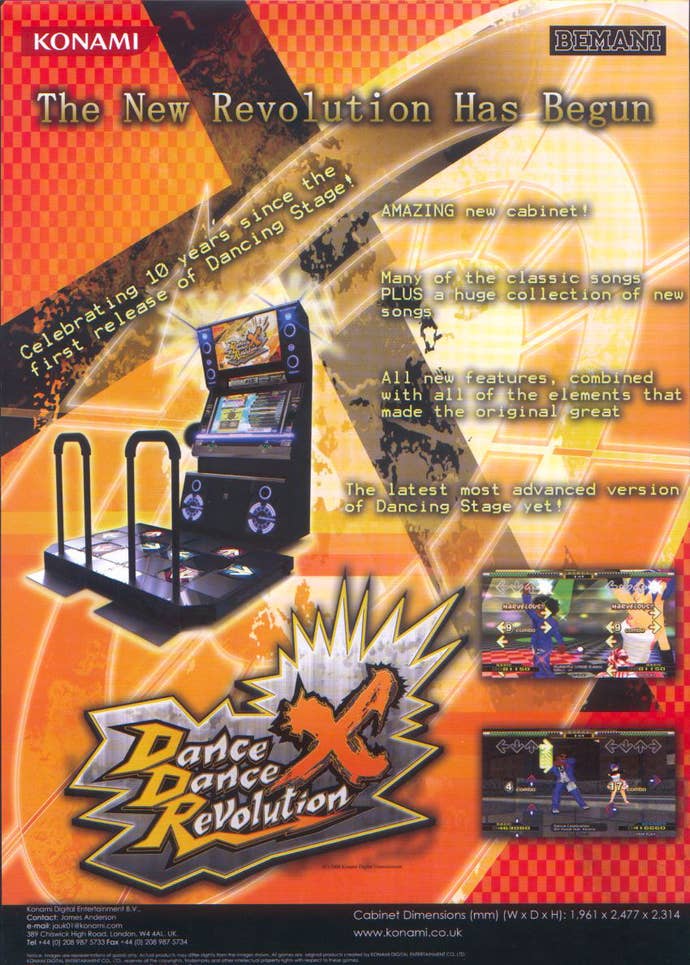
Samantha Leichtamer, Community Curator
When I started attending arcades with my friends on a regular basis, the scene was already dying. Scratch that. It was basically dead - holding on by threads... and those threads were named Dance Dance Revolution.
At least at the Fun and Games by me, that’s what it looked like. While Time Crisis and Daytona USA were collecting dust in the back, the Dance Dance Revolution machines were always in use. Kids were so eager for a chance to play, they would screen watch from behind the machine and mimic the moves just to practice. My friends and I were hooked. Looking back, it was a really fun and healthy way for us to play together. An oh did we play!
That was until Fun and Games was shut down. Too many teenagers were “loitering” in the mall. Either that, or the business finally caved from financial struggles. Although, from the size of the crowds DDR brought in, I would never have guessed the latter. That year the arcade shut down, my parents bought me DDR Extreme 2 with dance pads for Christmas. 10 years later, my dance pads still work and DDR is absolutely my favorite way to do cardio.
